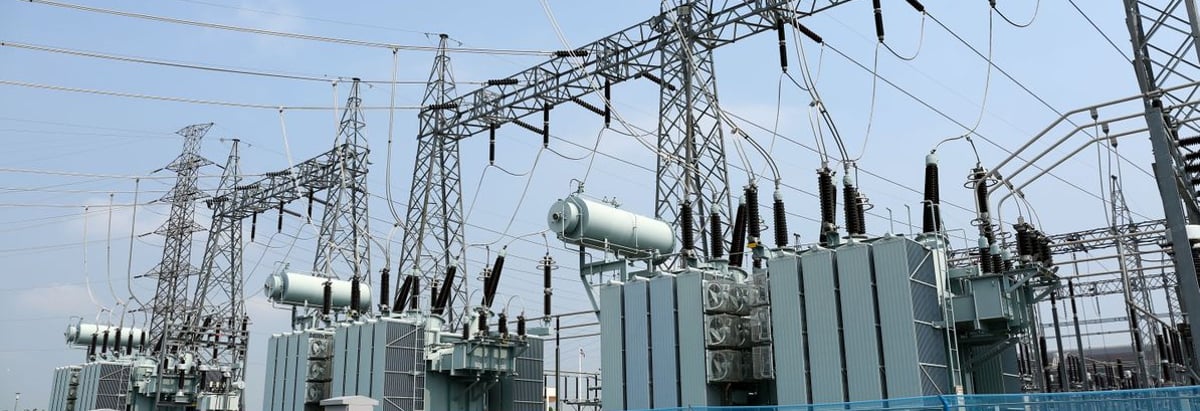- Canada
- /
- Other Utilities
- /
- TSX:CU
Canadian Utilities (TSE:CU) Has Some Way To Go To Become A Multi-Bagger

Did you know there are some financial metrics that can provide clues of a potential multi-bagger? Firstly, we'll want to see a proven return on capital employed (ROCE) that is increasing, and secondly, an expanding base of capital employed. Ultimately, this demonstrates that it's a business that is reinvesting profits at increasing rates of return. Having said that, from a first glance at Canadian Utilities (TSE:CU) we aren't jumping out of our chairs at how returns are trending, but let's have a deeper look.
What Is Return On Capital Employed (ROCE)?
If you haven't worked with ROCE before, it measures the 'return' (pre-tax profit) a company generates from capital employed in its business. To calculate this metric for Canadian Utilities, this is the formula:
Return on Capital Employed = Earnings Before Interest and Tax (EBIT) ÷ (Total Assets - Current Liabilities)
0.048 = CA$1.0b ÷ (CA$23b - CA$1.4b) (Based on the trailing twelve months to December 2023).
Therefore, Canadian Utilities has an ROCE of 4.8%. On its own that's a low return on capital but it's in line with the industry's average returns of 4.9%.
View our latest analysis for Canadian Utilities

In the above chart we have measured Canadian Utilities' prior ROCE against its prior performance, but the future is arguably more important. If you'd like to see what analysts are forecasting going forward, you should check out our free analyst report for Canadian Utilities .
So How Is Canadian Utilities' ROCE Trending?
Over the past five years, Canadian Utilities' ROCE and capital employed have both remained mostly flat. This tells us the company isn't reinvesting in itself, so it's plausible that it's past the growth phase. So don't be surprised if Canadian Utilities doesn't end up being a multi-bagger in a few years time. On top of that you'll notice that Canadian Utilities has been paying out a large portion (76%) of earnings in the form of dividends to shareholders. These mature businesses typically have reliable earnings and not many places to reinvest them, so the next best option is to put the earnings into shareholders pockets.
The Bottom Line On Canadian Utilities' ROCE
In a nutshell, Canadian Utilities has been trudging along with the same returns from the same amount of capital over the last five years. Unsurprisingly, the stock has only gained 11% over the last five years, which potentially indicates that investors are accounting for this going forward. So if you're looking for a multi-bagger, the underlying trends indicate you may have better chances elsewhere.
If you want to know some of the risks facing Canadian Utilities we've found 2 warning signs (1 is a bit unpleasant!) that you should be aware of before investing here.
For those who like to invest in solid companies, check out this free list of companies with solid balance sheets and high returns on equity.
New: AI Stock Screener & Alerts
Our new AI Stock Screener scans the market every day to uncover opportunities.
• Dividend Powerhouses (3%+ Yield)
• Undervalued Small Caps with Insider Buying
• High growth Tech and AI Companies
Or build your own from over 50 metrics.
Have feedback on this article? Concerned about the content? Get in touch with us directly. Alternatively, email editorial-team (at) simplywallst.com.
This article by Simply Wall St is general in nature. We provide commentary based on historical data and analyst forecasts only using an unbiased methodology and our articles are not intended to be financial advice. It does not constitute a recommendation to buy or sell any stock, and does not take account of your objectives, or your financial situation. We aim to bring you long-term focused analysis driven by fundamental data. Note that our analysis may not factor in the latest price-sensitive company announcements or qualitative material. Simply Wall St has no position in any stocks mentioned.
About TSX:CU
Canadian Utilities
Engages in the electricity, natural gas, renewables, pipelines, and liquids businesses in Canada, Australia, and internationally.
Moderate growth potential second-rate dividend payer.
Similar Companies
Market Insights
Community Narratives



